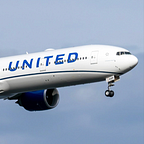The Story of Pan American World Airways: A Legacy Forever.
Pan American World Airways, commonly known as Pan Am, was one of the pioneers of aviation. Pan Am was once the largest international carrier of the United States, as well as the unofficial overseas flag carrier of the United States. It was one of the first airlines to fly worldwide and the first to incorporate many innovations of the modern jet age: jumbo jets, computer reservation systems, and paid an extra emphasis on the luxury of intercontinental air travel. Pan Am was a cultural symbol of the 20th century, easily recognizable with its blue globe logo and its iconic callsign, Clipper. So, the question arises — how did one of the most successful and prominent airlines of the 20th century declare bankruptcy?
The Beginnings
Pan American Airways was founded on March 14, 1927 by two U.S. Army Air Corps officers. Soon after, a contract was made with the U.S. Post Office, and commenced operations as a mail carrier.
The Clipper Era
Pan Am’s passenger services started on South American routes from Miami with flying boats. Pan Am used models such as the Sikorsky S-38 and S-40, and they carried the nickname “Clipper”. Soon after, transatlantic and transpacific flights took off on similar models with numerous stops along the route. Pan Am started using Boeing 314 Clippers for flights to Asia, which had extended range to reach across oceans and a double-decked cabin that allowed Pan Am to emerge as a luxurious airline.
The Golden Jet Age
When the jet age came, Pan Am was one of the first to modernize. 20 Boeing 707s and 25 Douglas DC-8s were ordered, enabling Pan Am to operate nonstop transatlantic services with viable payload in both directions. In April 1966, Pan Am placed a $525 million order (worth $5 billion today) for 25 Boeing 747s and established itself as one of the 747’s launch customers.
Not only that, Pan Am had supersonic plans as well. It reserved options for the Aerospatiale-BAC Concorde but canceled its plans by switching to being the first U.S. airline to sign for the Boeing 2707. Unfortunately, the Boeing 2707 project failed to obtain federal funding and was eventually scrapped.
The Downfall
Airline Deregulation Act of 1978
In 1978, President Jimmy Carter introduced the Airline Deregulation Act, which severely limited federal control on airfares, routes, and the entry of new airlines. This proved to be beneficial for smaller airlines to expand, such as Southwest, but meant more competition for the luxury, mainline carriers such as Pan Am. New airlines introduced cheaper fares, driving customers away from the luxury experience that Pan Am offered.
The 1973 Oil Crisis
In the 1970s, a series of oil crises hit the aviation industry. Members of the OAPEC (Organization of Arab Petroleum Exporting Countries) proclaimed an oil embargo, causing the price of aviation fuel to skyrocket. Alongside rising fuel costs, Pan Am had to raise its airfares. This is not an option due to the Airline Deregulation Act.
Poor Management
In the journey for domestic expansion, Pan Am mistakenly overpaid for the acquisition of Miami’s National Airlines. Trying to mitigate the losses, Pan Am sold its Pacific division to United Airlines, which was composed of 25% of Pan Am’s network at the time.
Tragedy of Flight 103: The Lockerbie Bombing
In December of 1988, a New York-bound 747 departing from London suffered a terrorist attack that took the lives of 270 people. The tragedy was a public relations disaster that led to a $300 million lawsuit against the airline. The Federal Aviation Administration (FAA) imposed multiple safety fines on Pan Am, further worsening the airline’s financial situation.
The End.
On January 8, 1991, Pan American World Airways filed for bankruptcy after six decades of pioneering air travel. Delta Air Lines purchased the remaining assets of Pan Am after winning the bid against TWA, United, and AA. Pan Am was not the only airline that filed for bankruptcy during this time: Continental (acquired by United), Eastern, and Pacific South West all filed for Chapter 11.
Pan Am left its footsteps in aviation history, being the first to modernize and one of the first to introduce the world to the jet age. Not only that, Pan Am worked closely with Boeing through the development of the 747. Joe Sutter, lead designer of the Boeing 747 program, said in an interview:
The 747 wouldn’t have happened [without the input of Pan Am’s CEO, Juan Trippe]. Then you wonder, what would the industry look like today without it?
Pan Am will always hold a special place in the history books, in the hearts of aviation enthusiasts, and in the memories of those who experienced the epitome of long-haul air travel onboard one of its Clippers worldwide. 🫡
